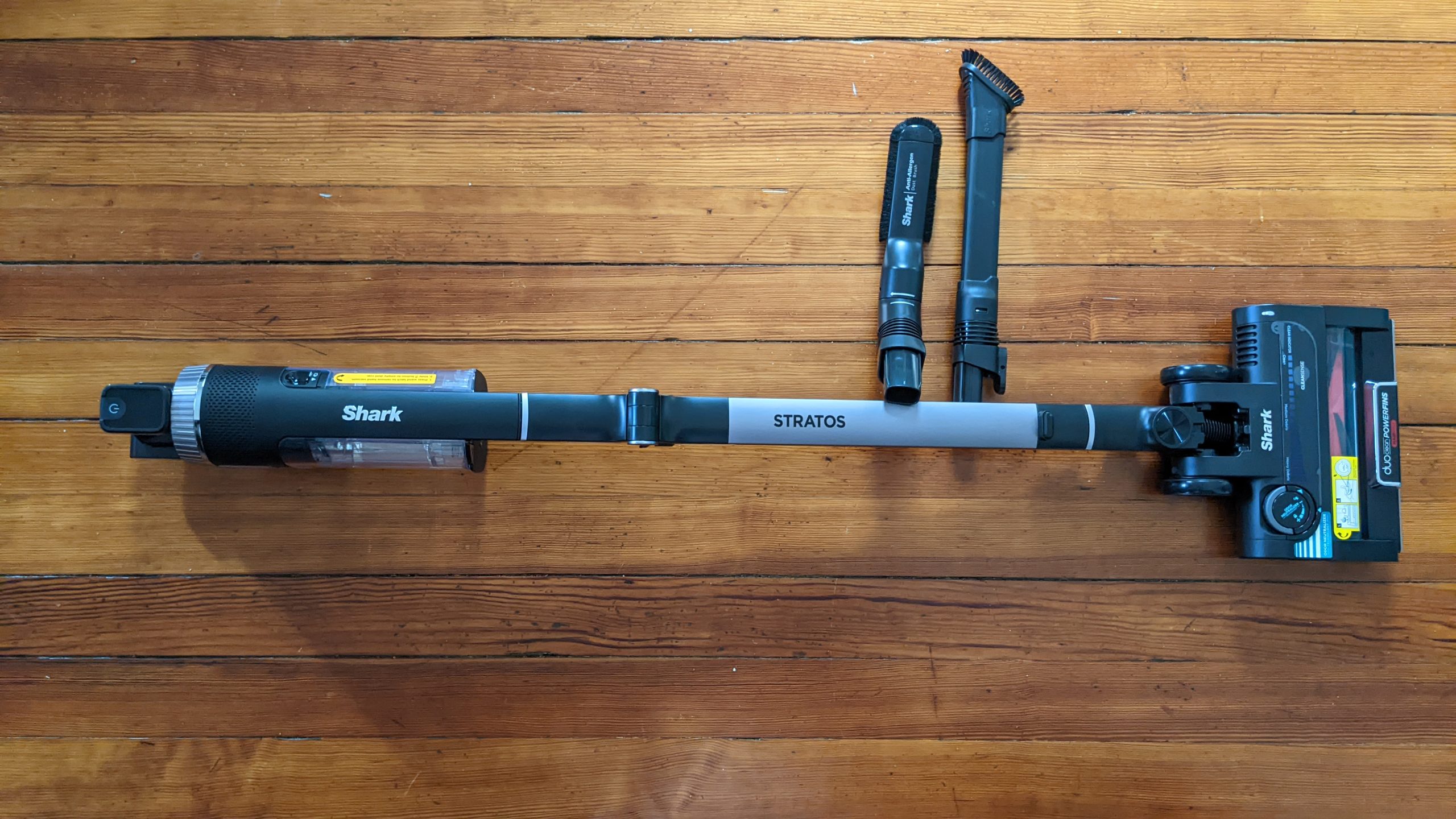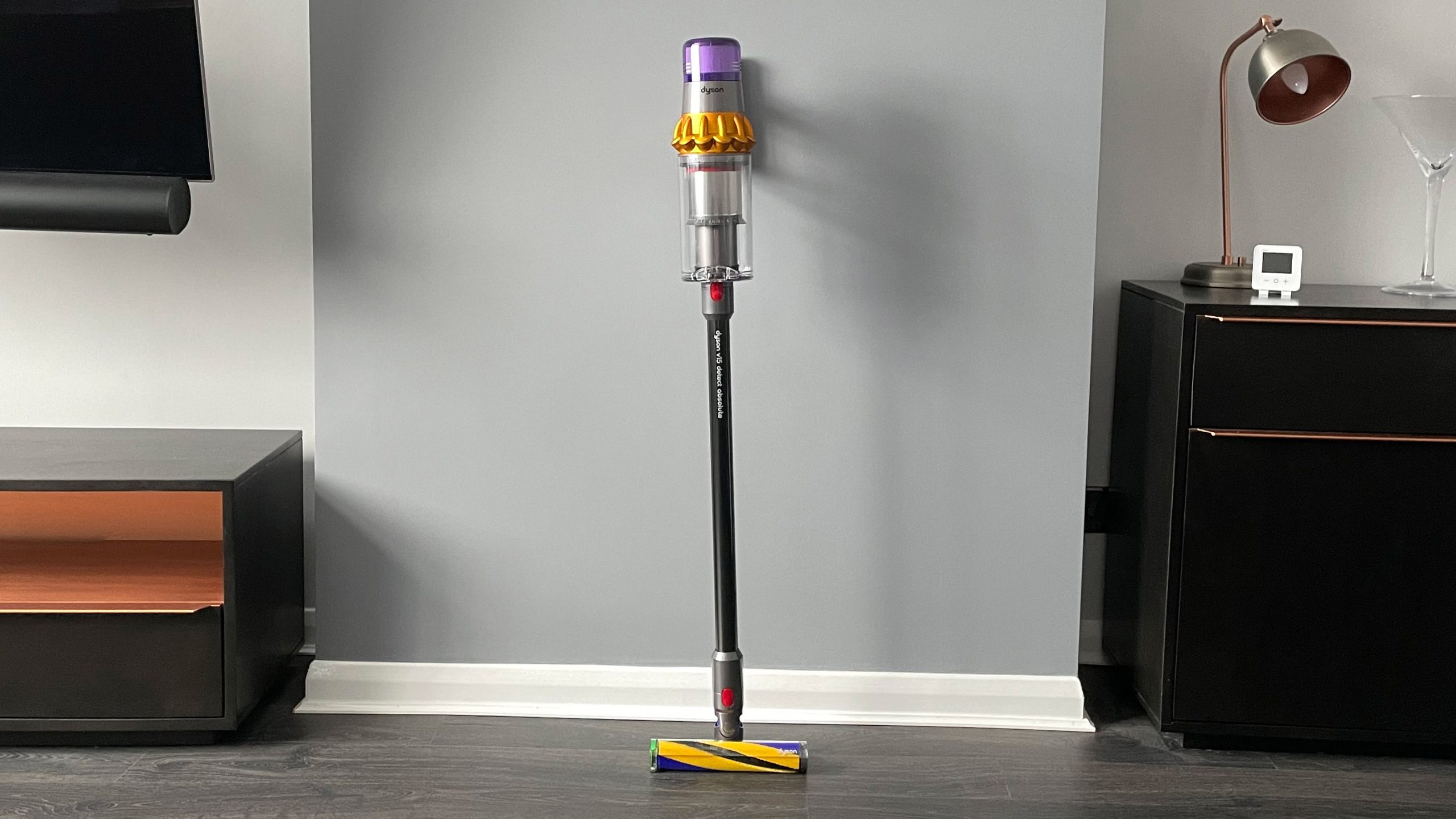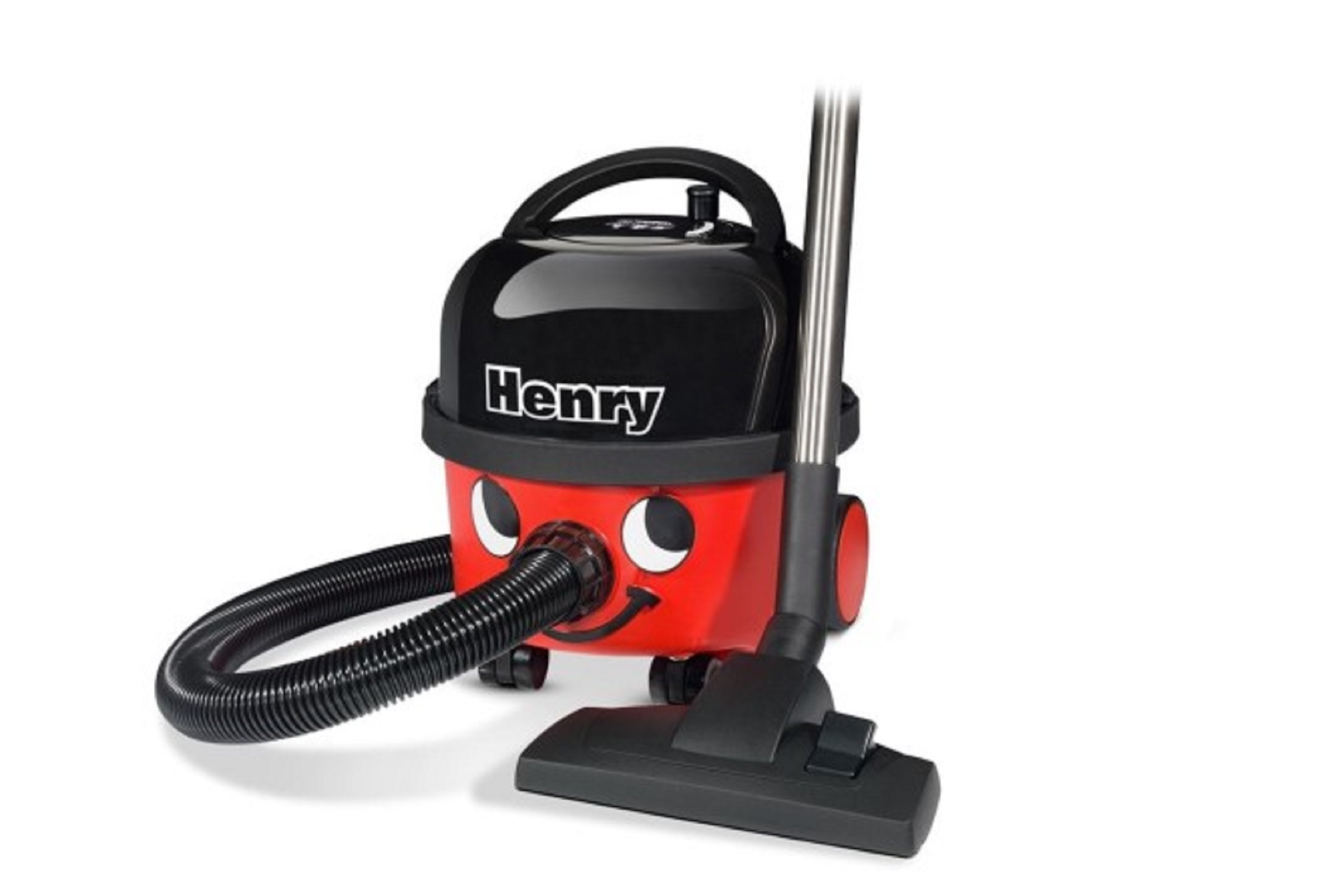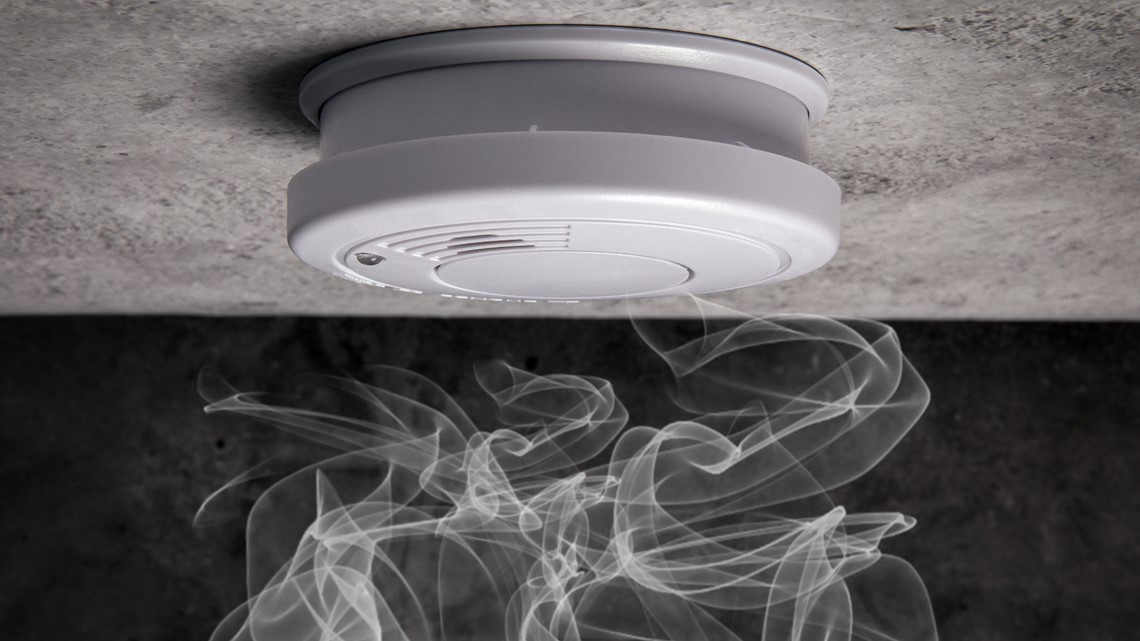1. The Evolution of Vacuum Cleaners: From Dust Pans to High-Tech Cleaning Marvels
Introduction
We’ve all experienced the struggle of battling dust, dirt, and pet hair that accumulates in our homes. Thankfully, vacuum cleaners have emerged as our trusty partners in this ongoing battle. But have you ever wondered how these cleaning marvels came into existence? This article dives into the evolution of vacuum cleaners, taking you on a fascinating journey from humble beginnings to the cutting-edge technology we have today. So grab your favorite mug of cocoa and join us as we explore the evolution of this indispensable household cleaning tool.
[amazon bestseller=”Vacuum Cleaners” items=”10″]
2. A Glimpse into the Origins of the Vacuum Cleaner
The Early Days: Dust Pans and Carpet Sweepers
Long before the advent of modern vacuum cleaners, people had to rely on simpler methods for keeping their homes clean. In the early 1800s, the only way to tackle dirt and debris was through the use of dust pans and manual carpet sweepers. Picture this: a weary homemaker armed with a broom or a brush, gathering up dust and dirt into a dustpan, and then disposing of it. Backbreaking work, right?
Enter the Carpet Sweeper
In the mid-19th century, the carpet sweeper was introduced, bringing a touch of innovation to the cleaning routine. These mechanical devices featured rotating brushes powered by hand cranks, allowing for more efficient cleaning compared to the labor-intensive dust pan method. Although they couldn’t entirely eliminate the need for manual labor, carpet sweepers represented a significant step forward in home cleaning technology.
The Birth of the “Suction Sweeper”
As the 19th century progressed, inventors began exploring ways to create a machine that could do the sweeping and gathering of dirt automatically. In 1869, the first patent for a “carpet sweeper” with a mechanical suction apparatus was granted to Ives W. McGaffey. This invention, known as the “suction sweeper,” utilized a hand-operated bellows system to generate suction power for picking up dirt and debris.

While the suction sweeper was a notable improvement, it still required manual operation and proved to be quite pricey for most households. Vacuum cleaners, as we know them today, were still a distant dream, waiting for technological advancements to pave the way for their emergence.
3. Key Concepts: The Importance of Vacuum Cleaners in Our Lives
Revolutionizing Home Cleaning Efficiency
Imagine having to manually sweep and mop your entire house every day, with dust particles settling on every surface and carpets collecting debris that could trigger allergies or asthma attacks. Vacuum cleaners have revolutionized our cleaning routines, offering a convenient and efficient way to eliminate dirt and allergens from our living spaces. They not only save us valuable time and effort but also provide a more thorough cleaning compared to traditional methods.
Historical Significance and Societal Impact
The advent of vacuum cleaners marked a pivotal moment in the history of domestic labor. Before their widespread availability, the majority of house cleaning was performed manually and required substantial physical effort. Vacuum cleaners liberated individuals from the burden of arduous household chores, providing more leisure time and improving overall quality of life.

Beyond personal benefits, vacuum cleaners have also contributed to societal changes. They allowed for the rise of smaller households and made it easier for women to enter the workforce, as the time and effort required for cleaning decreased significantly. As a result, vacuum cleaners played a role in advancing gender equality and shaping social dynamics within households.
The Hygienic Advantages
Vacuum cleaners play a crucial role in maintaining cleanliness and hygiene within our homes, especially in areas where dust and allergen accumulation can pose health risks. Regular vacuuming helps remove allergens such as pollen, pet dander, and dust mites, promoting better indoor air quality and reducing allergies or respiratory issues among occupants. By ensuring that our living spaces are free from dirt and allergens, vacuum cleaners contribute to creating a healthier environment for ourselves and our loved ones.

In the next sections of this article, we will dive deeper into the advancements that propelled vacuum cleaners into the modern era, exploring the different types and technologies available today. So, stick around as we uncover the secrets behind these essential cleaning aides that make our lives easier and our homes cleaner.
4. The Power of Suction: How Vacuum Cleaners Get the Job Done
Behind the Suction Mechanism
Have you ever wondered how vacuum cleaners are able to effortlessly suck up dirt and debris from your floors? It’s all thanks to the powerful suction mechanism hidden within these cleaning marvels. Just like the mighty jaws of a carnivorous predator, vacuum cleaners use their suction power to devour every speck of dust and micro-sized particles that spoil the cleanliness of your home.

At the heart of every vacuum cleaner lies an electric motor that spins a fan or impeller at an incredibly high speed. This spinning motion generates a low-pressure zone within the vacuum, creating a strong suction force. As the air is drawn into the cleaner, it passes through various filters, which trap dust and allergens, improving the air quality in your home.
Types of Suction Systems
Not all vacuum cleaners are created equal when it comes to suction power. The type of suction system employed varies depending on the model and design.
1. Direct Suction: In simpler models, direct suction relies on the basic principle of air movement to remove dirt and debris. As the motor runs, the suction created pulls in the air, which, in turn, pulls in the dirt from the floor or surface being cleaned.

2. Cyclonic Suction: Many modern vacuum cleaners utilize a cyclonic suction system. Inspired by the whirling force of a tornado, this system harnesses centrifugal force to separate the dirt and dust particles from the air. By rapidly spinning incoming air, the debris is thrown against the walls of the vacuum, allowing clean air to pass through the filters while collecting the dirt for easy disposal.
3. Dual Motor Suction: Found in high-performance vacuum cleaners, dual motor suction systems boast impressive power and deep-cleaning capabilities. With one motor dedicated solely to generating suction and another to drive the vacuum’s brush roll, this system provides exceptional cleaning efficiency by simultaneously agitating and lifting dirt from carpets, leaving them impeccably clean.
5. Cleaning with Precision: Practical Applications and Versatility
Reviving Carpets and Upholstery
Ever encountered stubborn dirt or pet hair embedded in your carpets or upholstery, seemingly impossible to remove? Vacuum cleaners are your trusty allies when it comes to breathing new life into these surfaces. The rotating brush roll feature found in many models is specifically designed to loosen and lift dirt from deep within carpets, making them look fresh and vibrant again. Additionally, vacuum cleaners equipped with specialized upholstery tools gently remove dirt and allergens from furniture, leaving your home a cozy and allergy-free sanctuary.

From Bare Floors to High Ceilings
Vacuum cleaners are more versatile than you might think! From hardwood floors and tiles to curtains and ceilings, their cleaning prowess extends beyond carpets. While some cleaners come with adjustable brush rolls or nozzle settings for different floor types, others offer detachable cleaning wands or extension hoses to reach high and narrow areas. With their flexibility and adaptability, vacuum cleaners ensure no nook or cranny is left untouched, giving you a spotless environment effortlessly.
An End to Pesky Allergens
For allergy sufferers, vacuum cleaners are game-changers. They make it possible to effectively reduce indoor allergens like pollen, dust mites, and pet dander that can trigger uncomfortable symptoms. High-quality filters, such as High-Efficiency Particulate Air (HEPA) filters, successfully capture even the smallest particles, ensuring a cleaner and healthier breathing space for you and your loved ones.

6. Overcoming Challenges: Tips and Maintenance of Your Vacuum Cleaner
Regular Cleaning and Maintenance
Maintaining the performance and lifespan of your trusted vacuum cleaner requires regular cleaning and maintenance. Emptying the dustbin or bag when it reaches capacity, replacing filters as recommended, and removing tangled hair or debris from the brush roll are some essential tasks. These maintenance steps not only ensure optimal suction power but also prevent unpleasant odors and enhance the efficiency of your cleaner.
Watch Out for Clogs
Did you know that clogs can significantly impair the cleaning ability of your vacuum cleaner? It’s important to keep an eye out for potential obstructions in the hose, wand, or brush roll. Regularly inspect and remove any debris or blockages to maintain uninterrupted airflow and maximum suction power. Remember, a vacuum cleaner without sufficient suction is like a pencil without lead – it simply can’t get the job done!

Upgrade to Optimize Performance
If your trusty vacuum cleaner falls short in providing the cleaning power you desire, it might be time for an upgrade. New technology advancements constantly emerge, offering enhanced suction, specialized attachments, improved maneuverability, and quieter operation. By keeping up with the latest innovations, you can select a vacuum cleaner that suits your unique cleaning needs while enjoying the benefits of cutting-edge engineering.
Whether you are tackling everyday messes or deep-cleaning your entire home, understanding the inner workings of vacuum cleaners and their versatility equips you with the knowledge to make the most of your cleaning routines. With the right maintenance and an upgrade when necessary, you’ll ensure that your vacuum cleaner remains your loyal cleaning companion for years to come.

7. The Future of Vacuum Cleaners: Beyond the Traditional
7.1 Smart Vacuum Cleaners: The Next Level of Convenience
Technology is evolving at an exponential rate, and vacuum cleaners are no exception. Smart vacuum cleaners have burst onto the scene, offering a level of convenience that was once unimaginable. These high-tech cleaning devices come equipped with advanced features such as artificial intelligence, room mapping, and voice control.
Imagine effortlessly commanding your vacuum cleaner to start cleaning specific areas of your home just by using your voice. With smart vacuum cleaners, you can set up cleaning schedules, control them remotely via smartphone apps, and even receive notifications when a cleaning cycle is complete.
7.2 Robotic Vacuum Cleaners: Your Personal Cleaning Assistant

Robotic vacuum cleaners have become immensely popular in recent years. These compact, autonomous devices can navigate your home independently, adjusting their cleaning pattern to efficiently cover every nook and cranny. They use sensors to detect obstacles, stairs, and furniture, ensuring they don’t damage themselves or your belongings.
These little helpers can be programmed to clean on a schedule, allowing you to return home to impeccably clean floors without lifting a finger. They are particularly handy for busy individuals who want to maintain a clean home but don’t have the time or energy for regular vacuuming.
8. Alternative Cleaning Methods: Consider Your Options
8.1 Carpet Sweepers: Simplicity at Its Finest
If you’re seeking a less technological approach to cleaning your floors, carpet sweepers can be a great alternative to vacuum cleaners. These manual devices use brushes and bristles to collect dirt and debris from your carpets, relying solely on your physical effort to power them. They are lightweight, easy to maneuver, and noise-free, making them an excellent choice for small spaces or noise-sensitive environments.
8.2 Steam Cleaners: Deep Cleaning and Disinfection
Steam cleaners harness the power of high-temperature steam to sanitize and refresh your floors. Perfect for households with pets or individuals with allergies, these devices eliminate bacteria, dust mites, and allergens without the need for harsh chemicals. They are particularly effective on hard flooring surfaces, such as tile or hardwood, providing a deep clean that goes beyond what traditional vacuum cleaners can achieve.

9. Embrace Spotless Floors and Effortless Cleaning
When it comes to keeping our homes clean, vacuum cleaners play a vital role in maintaining spotless floors and contributing to a healthy living environment. From the simple yet effective upright models to the cutting-edge smart and robotic options, there is a vacuum cleaner to suit every lifestyle and cleaning requirement.
Investing in a quality vacuum cleaner not only saves us time and energy but also improves indoor air quality by removing dust, pet hair, and allergens. By understanding our cleaning needs and exploring the vast array of options available, we can choose a vacuum cleaner that fits our specific requirements.
So, let’s bid farewell to the days of lugging heavy brooms or spending hours on our knees with dustpans and brushes. With the right vacuum cleaner by our side, we can effortlessly enjoy pristine floors and more free time for the things we truly love.
Frequently Asked Questions
1. How often should I replace the bag in my vacuum cleaner?
It’s recommended to replace the bag in your vacuum cleaner when it’s about three-quarters full. This ensures optimal performance and suction power. However, if you notice a decrease in suction or unpleasant odors coming from the vacuum, it’s best to replace the bag sooner.
2. Can I use my vacuum cleaner on all types of flooring?
Most vacuum cleaners are versatile and can be used on a variety of flooring types such as carpets, hardwood, tiles, and laminate. However, it’s essential to check the manufacturer’s instructions to ensure your specific model is suitable for the type of flooring you have.
3. How often should I clean the filters in my vacuum cleaner?
Cleaning the filters of your vacuum cleaner periodically is crucial for maintaining its efficiency. Depending on the model, it’s generally recommended to clean or replace the filters every 1-3 months. However, if you have pets or allergies, you may need to clean them more frequently to prevent clogs and maintain optimal performance.
4. Are bagless vacuum cleaners better than those with bags?
Bagless vacuum cleaners offer convenience as you don’t need to buy replacement bags. However, both bagged and bagless options have their pros and cons. Bagged vacuums are typically more hygienic as they contain allergens and dust securely, while bagless models require you to empty the dust canister carefully to avoid releasing allergens back into the air. Ultimately, the choice depends on your personal preference and needs.
5. How can I reduce the noise produced by my vacuum cleaner?
To reduce the noise produced by your vacuum cleaner, you can follow a few tips:
– Ensure the vacuum’s parts are properly assembled and not loose.
– Use a vacuum cleaner with noise reduction features, if available.
– Vacuum during daytime hours, when noise restrictions may be in place.
– Consider using ear protection, such as earplugs or noise-canceling headphones, while vacuuming.
– Regularly maintain your vacuum by cleaning or replacing its filters and emptying the dust canister. Clogs can increase noise levels.














